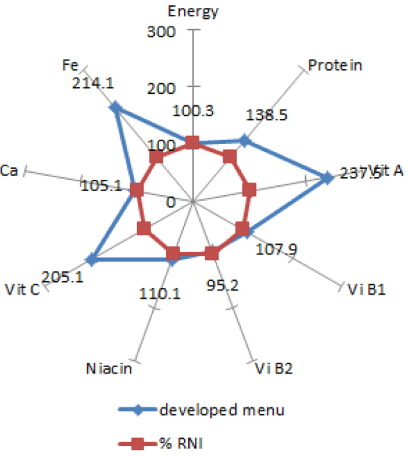References
1. Kim MH, Bae YJ, Lee DH, Cho HK, Choi SH, Sung CJ. A evaluation study on nutrient intake status and diet quality of middle and old aged vegetarian women in Korea. Korean J Community Nutr 2005;10(6):869–879.
2. Jang BJ. A study on the wellness, life satisfaction, subjective happiness, quality of life of the customer of healing food temple food : focused on physical·spiritual wellness. Northeast Asia Tour Res 2013;9(3):21–43.
3. Kim JA, Lee SY. Evaluation of served menu and management of foodservice in Korean buddhist temples. J East Asian Soc Diet Life 2005;16(2):215–225.
4. Lee SY, Kim JA. A study on temple food intake and health. J East Asian Soc Diet Life 2014;24(6):691–699.
5. Korea Rural Economic Institute. 2008 Rural prospect 1st edth ed. Seoul: 2008. p. 131–154.
6. Choi JH. Global food consumption and production trends change In : Proceedings of 2014 Annual Conference of The East Asian Society of Dietary Life; 2014 Nov 14; Seoul. p. 49–64.
7. Park JH. Study on the effect of Korean restaurants selected property customer satisfaction and revisit In : Proceedings of 2010 Spring Symposium of The Korean Academic Association of Business Administration; 2010 Apr 16; Seoul. p. 1–16.
8. Stein K. Keeping up with a continuing trend in foodservice. J Am Diet Assoc 2004;104(9):1343–1344.
9. Kwon S, Lee S, Lee Y, Yoon J. Characteristics and current status of well-being menus served in contract-managed workplace foodservice. J Korean Diet Assoc 2010;16(1):1–12.
10. Lee KE, Hong WS, Kim MH. Students' food preferences on vegetarian menus served at middle and high schools. J Korean Diet Assoc 2005;11(3):320–330.
11. Kim HH, Kim YN. A preference analysis of vegetable group foods in primary school students and their mothers. J Korean Home Econ Educ Assoc 2012;24(3):73–88.
12. Hong JH, Cho MS. Acceptance of vegetable menus of a school lunch program by high school students in Seoul and its association with health and dietary behavioral factors. Korean J Food Sci Technol 2012;44(1):121–134.
13. Ahn SW, Choi MK. Characteristics of school menus from the Daegu and Gyeongbuk area. J Korean Soc Food Sci Nutr 2013;42(6):983–990.
14. Lee YK, Kim YN. The differences in preference for vegetables among primary school to university students in Gyeongbuk area. Korean J Community Nutr 2014;19(5):415–424.
15. Kang KK. A study on the current availability and popularization of the Korean buddhist temple dish [master's thesis] Chodang University; 2010.
16. Lee IS, Lee S, Ahn BM, Kim HS. Students awareness of temple food inspectors In : Proceedings of 2010 Annual Conference of the Korean Society of Food and Cookery Science; 2010; Seoul. p. 130.
17. Lee NH. A study of influence on establishment a temple foods business by its characteristics [master's thesis] Hoseo University; 2012.
18. Moon HK, Chung HR, Cho EY. Analysis of menu patterns from the Korean national nutrition survey in 1990. Korean J Diet Cult 1994;9(3):241–250.
19. Lee SY. Tradition temple food recipe standardization Korean Buddhism corporation; 2013. Report No. 010110-01-2013-081.
20. Lee SY. A study on temple food intake and health Korean Buddhism corporation; 2014. Report No. 010110-14-2014-030.
21. The Korean Nutrition Society. Dietary reference intakes for Koreans 1st revisionth ed. Seoul: 2010. p. 9.
22. The Korean Nutrition Society. CAN-Pro [CD-ROM] Version 4.0th ed. Seoul: The Korean Nutrition Society; 2011.
23. Krebs-Smith SM, Smiciklas-Wright H, Guthrie HA, Krebs-Smith J. The effects of variety in food choices on dietary quality. J Am Diet Assoc 1987;87(7):897–903.
24. Kant AK, Schatzkin A, Block G, Ziegler RG, Nestle M. Food group intake patterns and associated nutrient profiles of the US population. J Am Diet Assoc 1991;91(12):1532–1537.
25. Kim DJ. Nengumkyung 1st revisionth ed. Seoul: Minjoksa; 2005. p. 268.
26. Lee YM. Mahasungkiyul 1st revisionth ed. Seoul: The institute of tripitaka Koreana; 2010. p. 337.
27. Seo HK. Food culture of buddhism. Asian Comp Folk 2003;24(2):197–226.
28. Son SH, Lee HJ, Park K, Ha TY, Seo JS. Nutritional evaluation and its relation to the risk of metabolic syndrome according to the consumption of cooked rice and cooked rice with multigrains in Korean adults: based on 2007-2008 Korean National Health and Nutrition Examination Survey. Korean J Community Nutr 2013;18(1):77–87.
29. Kim MH. The assessment of the vegetarian menus and the school foodservice quality [master's thesis] Dongduk Women's University; 2004.
30. Lee Y, Kim M, Chong HK, Kim HR, Shim JE, Cho H, et al. Evaluation of traditional aspects of school lunch menus in Korea by analyzing dish group composition. Korean J Community Nutr 2013;18(4):386–401.






